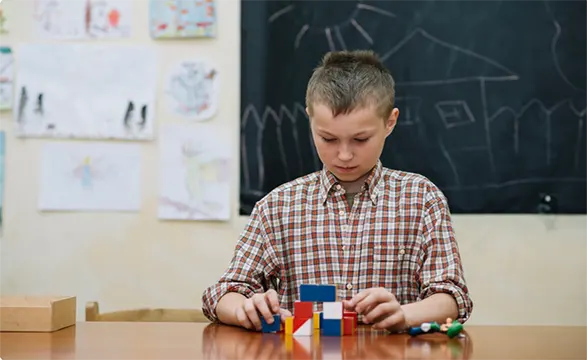Math Manipulatives for Kindergarten
Math manipulatives for kindergarten are simple, hands-on tools that help young learners understand abstract math concepts in a concrete way. Items such as counting bears, snap cubes, and number lines allow children to physically see and touch numbers, making ideas like addition and subtraction more meaningful. At this stage, learning is most effective when it is tactile and visual, so manipulatives provide an essential bridge between play and structured mathematical thinking.
Math manipulatives for kindergarten also build confidence by giving students the chance to experiment with different problem-solving strategies. For example, when children use blocks to group numbers, they begin to recognize patterns and relationships that lay the foundation for more complex skills later on. Teachers often integrate these tools into everyday activities such as sorting, comparing, and measuring, which reinforces both fine motor skills and mathematical understanding. Ultimately, manipulatives make early math learning enjoyable, interactive, and developmentally appropriate for young children.
Manipulatives for Kindergarten Math
Manipulatives for kindergarten math are designed to transform abstract concepts into engaging, hands-on learning experiences. In the early years of kindergarten, children are still developing their understanding of numbers, shapes, and patterns. By using mathematical manipulatives, teachers and parents can provide a bridge between playful exploration and structured learning. These tools allow children to physically handle objects, count them, and experiment with grouping or sorting, which builds a strong foundation for number sense. Especially in preschool and early childhood education, where learning is rooted in curiosity and exploration, manipulatives play an important role in shaping positive attitudes toward mathematics.

One of the strengths of manipulatives is that they support multiple learning styles. Some children learn best through visual aids, while others benefit from tactile interaction. By holding, moving, and rearranging items such as counters, cubes, or pattern blocks, children develop spatial awareness and logical thinking. Beyond arithmetic, manipulatives also help in building problem-solving skills, encouraging collaboration, and improving communication in small group activities.
- Counting objects like bears or buttons support early numeracy.
- Pattern blocks introduce shapes, symmetry, and sequencing.
- Linking cubes help children explore addition, subtraction, and measurement.
- Number lines provide a clear visual representation of sequencing and operations.
In classrooms and homes, manipulatives encourage exploration while strengthening motor skills and attention span. By integrating them into everyday lessons, educators create a learning environment where mathematical concepts feel natural, accessible, and fun. This approach ensures that children not only memorize numbers but also understand their meaning, building lasting confidence in mathematics.
Best Math Manipulatives for Kindergarten
Choosing the best math manipulatives for kindergarten involves selecting versatile educational materials that encourage discovery, practice, and creativity. At this age, children are eager to interact with their environment, and carefully chosen learning tools can make a big difference in how they grasp early math concepts. The most effective manipulatives are those that allow for open-ended play, giving children opportunities to explore multiple solutions and apply their imagination while still learning mathematical principles.
The use of concrete materials ensures that children understand numbers as more than abstract symbols. For instance, colored counters can be used to illustrate counting, addition, and subtraction, while base-ten blocks introduce place value in a tangible way. In addition to helping with calculation, these manipulatives also support language development, as children explain their reasoning while working with peers or teachers.
- Dominoes help children practice number recognition and develop strategic thinking.
- Ten frames simplify the process of understanding quantities up to ten.
- Measuring tapes or rulers teach early concepts of length and comparison.
- Fraction circles introduce the basics of parts and wholes in a playful manner.
By including these tools in daily lessons, teachers can connect math to real-life scenarios, such as measuring ingredients during cooking activities or sorting classroom supplies. When children manipulate objects to solve problems, they gain a deeper understanding that memorization alone cannot provide. Over time, these strategies help develop critical thinking skills and foster a sense of achievement, making mathematics both approachable and enjoyable during the most formative learning years.
